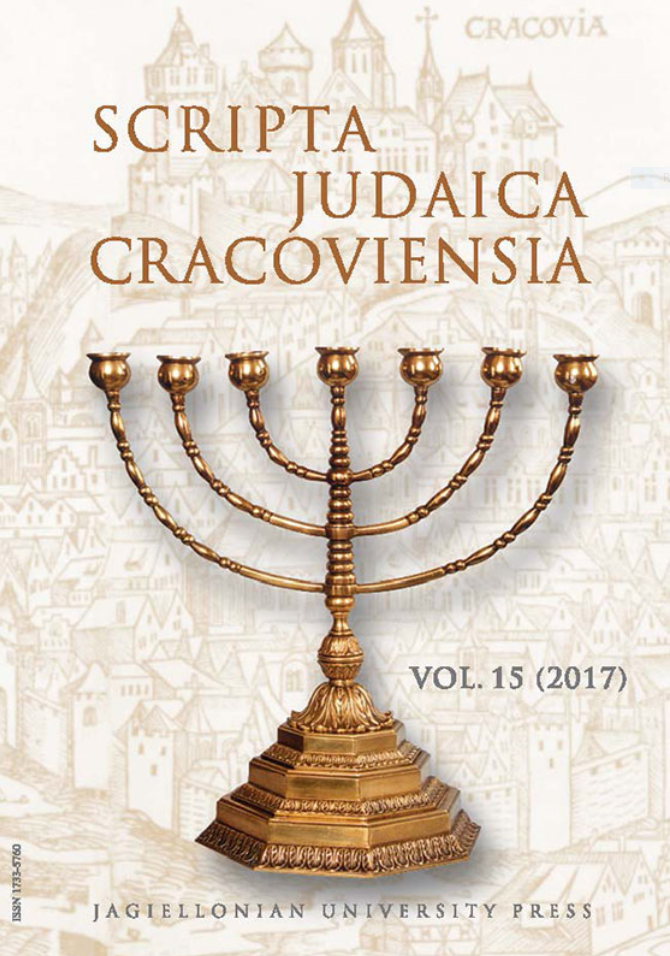Down the Ladder of Despair: The Holocaust Legacy of Itzhak Katzenelson
Down the Ladder of Despair: The Holocaust Legacy of Itzhak Katzenelson
Author(s): Moshe ShnerSubject(s): Jewish studies, Poetry, Studies of Literature, History of the Holocaust
Published by: Wydawnictwo Uniwersytetu Jagiellońskiego
Keywords: Itzhak Katzenelson; Warsaw Ghetto; Theodicy; Despair; Holocaust Literature; Spiritual Resistance;
Summary/Abstract: Holocaust historiography tries to offer a detailed and objective account of events, but it fails to grasp the inner world of its victims—those who perished and those who survived and carried its horrors in their souls. The hidden Holocaust is the dark abysses of the victims, their nightmares, and the despair they carry in their hearts to their last day, and in unclear ways pass it to the following generations.The archives of the Ghetto Fighters’ House Holocaust Museum at Kibbutz Lohamei HaGetaotin Israel holds the writings of the poet and educator Itzhak Katzenelson wrote during the Holocaust.His texts open a ‘door’ into the inner reality of the Holocaust, the shattered world of its victims. It is not scholarly historiographical writings, but rather a personal account of a sensitive person, a testimony, and interpretation of the real meaning of the Holocaust.Before World War II, Katzenelson was a gifted teacher, part of his family Hebrew education system in Łódź, a prolific writer, poet, and dramatist. Many of Katzenelson’s Hebrew poems became folk songs all over the Jewish Diaspora and in Palestine. His pre-war poetry was light, joyful,and childish in its character. His writings drew a bright picture of future Jewish life in the Land of Israel. His wartime writings were different, dominated by growing pain, rage, and finally despair.Before the war, Katzenelson mainly wrote in Hebrew, the revived language of the Jewish people.Then, as part of the Jewish population, struggling for life under the iron yoke of the German occupation, he wrote in Yiddish, identifying himself with the fate of his brethren. Katzenelson reached Warsaw in November 1939. In May 1940, he was ‘adopted’ by the ‘Dror’(freedom) movement, becoming part of its underground educational and cultural work, offering words of consolation and hope to the ghetto people. However, as he witnessed the growing horrors of the Holocaust, including the loss of his own family, he could no longer give meaning to the terrible events and his life ended in total despair.On April 1943, Katzenelson and his remaining son Zvi moved to the Arian side of Warsaw,imprisoned by the Gestapo and sent to the Vittel camp in France. Vittel was the last stage of his writings before his deportation in April 1944 to Drancy and then to Auschwitz to his death.As we Follow Katzenelson’s writings in Warsaw and Vittel, we descend a spiritual ladder from words of hope, through spiritual resistance to the bottom of the abysses of despair. Gradually,the joyful prophet of life became the prophet of darkness and a total loss of meaning. In his last writings, Katzenelson is bitter, poison to the soul, and yet with a sensitive pen and open heart,Katzenelson takes his readers down into the deepest chasms of history, showing them the reality of the Holocaust and its true meaning.
Journal: Scripta Judaica Cracoviensia
- Issue Year: 2017
- Issue No: 15
- Page Range: 83-98
- Page Count: 16
- Language: English

